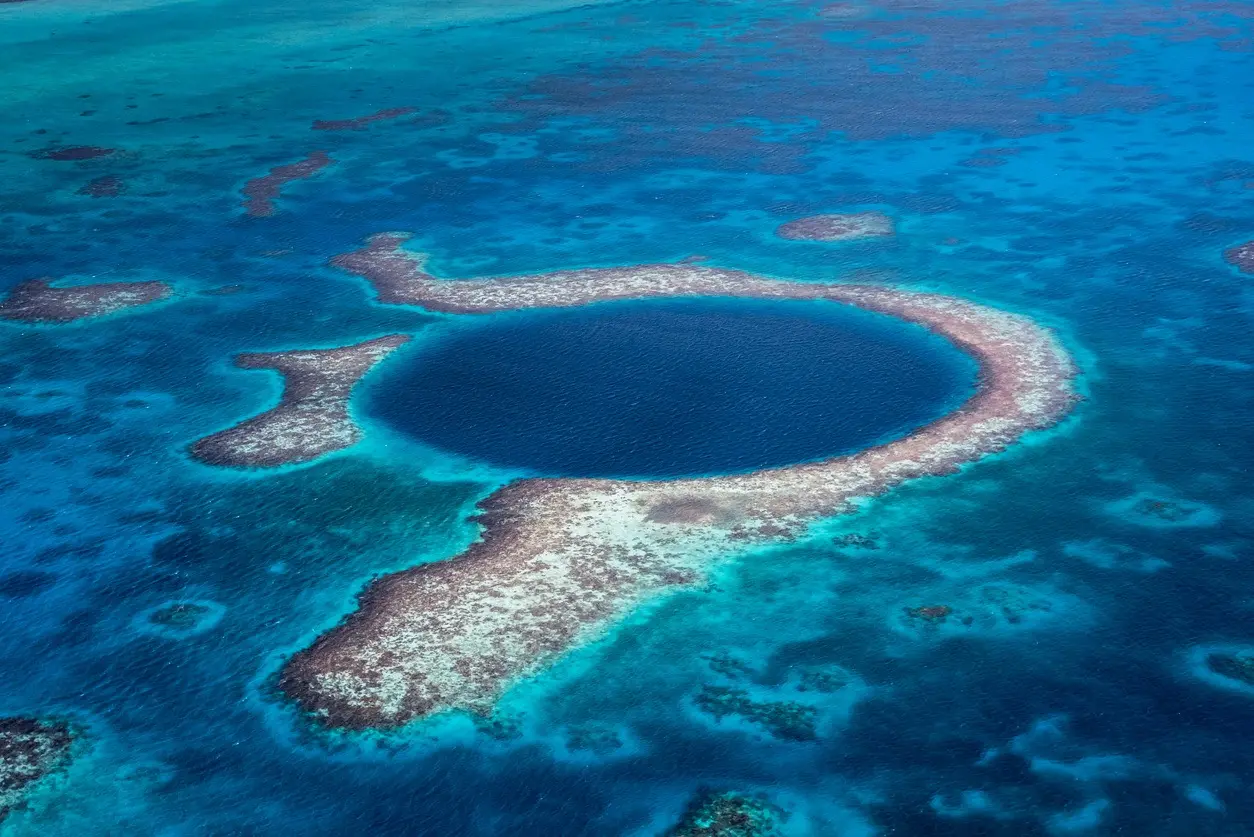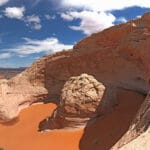Get ready to dive into the curious world of “black water holes”! These mysterious ocean spots are like underwater voids that spark wonder in scientists and ocean lovers alike. Wondering what lies in these dark depths? How deep do they go? Are they threats or hidden treasures? Join us on a journey to unravel the mysteries of these intriguing black water holes, discovering their impact on the ocean and the secrets they may hold.
Black Water Holes: Diving into a Cosmic Mystery
Imagine a place so dense and massive that even light can’t escape its pull – a black hole. These enigmatic objects in space have fascinated scientists for decades. Now, picture this: a colossal cloud of water vapor, billions of times heavier than our entire planet, swirling around one of these gravity wells. This incredible phenomenon, recently discovered by scientists, is a “black water hole.”
This particular black water hole, harboring a staggering 40 billion times the mass of Earth, isn’t just any cosmic puddle. Located a mind-boggling 12 billion light-years away from us, it encircles a supermassive black hole with incredible energy known as a quasar. This raises the question: how can anything, let alone a giant cloud of water, resist the pull of a black hole?
This enormous water cloud maintains its orbit just outside the black hole’s point of no return – the event horizon. It’s a delicate balancing act, like a daredevil walking a tightrope, close to the edge but not quite falling in. This incredible phenomenon is shedding light on the mysterious nature of black water holes and their potential role in the grand scheme of galaxy formation.
Rethinking Black Holes: More Than Just Vacuum Cleaners
The very existence of these massive water clouds near black holes challenges our previous understanding of these celestial giants. For a long time, black holes were seen as cosmic vacuum cleaners, sucking up everything in their path. The discovery of black water holes suggests they might also harbor vast reserves of water vapor.
This finding opens up a whole new world of possibilities for how stars and planets form in the vast universe. Could these black water holes be like cosmic watering holes, providing the essential ingredients for star birth? It’s a question scientists are eager to explore.
Fueling the Cosmic Engine: Black Water Holes as Energy Sources
Not only do these black water holes challenge our understanding of black holes, but they also seem to play a vital role in keeping these cosmic giants powered up. As the water vapor slowly falls into the black hole, it releases an enormous amount of energy. This energy fuels the black hole’s luminosity, making it shine brightly across the cosmos. This process also strengthens the black hole’s gravitational pull, allowing it to continue shaping the fabric of space-time.
The Cosmic Puzzle of Galaxy Formation: A New Piece Emerges
The discovery of this black water hole provides a tantalizing glimpse into the grand puzzle of galaxy formation. Imagine these water vapor clouds as primordial soup, full of the ingredients needed to build stars. As stars begin to form from this soup, they clump together, eventually evolving into the majestic galaxies we observe across the universe.
Scientists are still working tirelessly to understand exactly how galaxies form and evolve, but the presence of black water holes adds a fascinating new dimension to the story.
The Journey Continues: Unlocking the Secrets of Black Water Holes
The discovery of the largest known water cloud orbiting a supermassive black hole is just the beginning of an exciting journey. These black water holes challenge our preconceived notions about the universe and raise more questions than they answer. What other secrets do these cosmic water reservoirs hold? How do they influence the life cycle of black holes and the formation of galaxies? As we continue to explore the vast and mysterious cosmos, one thing is for sure: the universe is full of surprises, waiting to be discovered.
What is the Black Hole in the Water?
The recent discovery of a massive water cloud isn’t just any ordinary celestial body of water; it’s hanging out around a black hole—a region in space where gravity is so strong that not even light can escape. This particular black hole, located about 12 billion light-years away from us, is incredibly old, meaning it formed when the universe was still in its infancy.
This black hole is surrounded by a cloud of gas and dust, almost like a cosmic donut, known as a quasar. As the gas and dust in the quasar swirl around and get closer to the black hole, they heat up and glow brightly, making the black hole itself visible to us, even though it’s technically invisible.
Within this glowing quasar lies an unimaginable amount of water—all the oceans on Earth multiplied by 140 trillion! This discovery challenges previous assumptions about black holes, which were thought to consume everything around them, including water. Now, it seems they might play a role in releasing water and other elements back into space, potentially providing clues to how galaxies formed and evolved.
This discovery raises questions about the possibility of life in such extreme environments and how water can exist so close to a black hole without getting sucked in. As our understanding of the universe evolves with new technologies and observations, we are bound to encounter more surprises and mysteries that challenge our current knowledge.
How Deep is the Ocean Black Hole?
The term “ocean black hole” can refer to several different phenomena, each with its own unique characteristics and depths. One example is the Great Blue Hole in Belize, a giant underwater sinkhole plunging down about 124 meters. Divers from around the world explore its depths, while scientists study it to learn about past climates and ocean conditions.
Another type of “ocean black hole” is ocean eddies, massive swirls of water, sometimes hundreds of kilometers across, that spin and move through the ocean. While not actual black holes like those in space, these eddies act similarly in terms of how they pull in and trap water, nutrients, and even marine life.
Then there’s the “Black Hole of Andros” in the Bahamas, a super deep underwater cave, going down about 47 meters. This cave acts like a time capsule, with the water at the bottom trapped for thousands of years. The low-oxygen environment preserves ancient ocean conditions that scientists are eager to study.
Determining the exact depth of an ocean eddy is complex. These swirling masses of water have layers that can reach depths of thousands of meters, influencing ocean currents, temperatures, and even our planet’s climate.
Scientists are particularly interested in how ocean eddies might play a role in climate change. These giant conveyor belts move warm and cold water around the ocean, potentially distributing heat from the equator and possibly even helping to balance out the effects of global warming.
Whether we’re talking about underwater sinkholes, isolated caves, or massive ocean eddies, these “black holes” offer a glimpse into the hidden depths of our oceans and hold secrets that scientists are only beginning to uncover.
Is a Black Hole Dangerous?
Black holes, often portrayed as cosmic monsters in science fiction, are indeed fascinating objects. However, the danger they pose to Earth is minimal. The closest black hole to our solar system, V616 Monocerotis, is so far away that its gravity, while strong, wouldn’t significantly impact us.
Even if a black hole were to hypothetically swing by our solar system, our Sun’s mass is too small to turn into a black hole. Additionally, black holes are not cosmic predators actively hunting down planets; they only consume matter that gets too close, and Earth is nowhere near that danger zone.
Scientists are constantly studying black holes to unravel their mysteries. Some believe that supermassive black holes might play a role in the formation of galaxies, while others are trying to understand how black holes influence the evolution of stars. Each new discovery brings us closer to understanding the vast and incredible universe we inhabit.
Why Did the Black Hole Happen?
Black holes, regions in space where gravity is so strong that nothing, not even light, can escape, form under specific conditions. One way they form is when a massive star, much larger than our Sun, reaches the end of its life. Without the energy to support its own gravity, the star collapses inward, creating a black hole.
Another way black holes can form is through the collision of two neutron stars—incredibly dense remnants of massive stars. The collision’s immense energy can create a black hole.
Supermassive black holes, millions or even billions of times heavier than our Sun, lurk at the centers of galaxies, including our own Milky Way. While their formation is not fully understood, scientists believe they grow over billions of years by pulling in gas, dust, and stars that venture too close.
Scientists are continually striving to unlock the secrets of black holes, which remain some of the most fascinating and extreme objects in the universe, born from the death and collisions of stars.
Discover the chilling truths that lurk beneath the surface of our oceans by immersing yourself in our exposé of scary facts about the ocean. Also, unravel the enigmatic mystery surrounding the dark spots in the ocean, where secrets hide in the unfathomable depths.

















2 thoughts on “Unveiling the Mysteries of Black Water Holes: An Environmental Perspective”
Comments are closed.